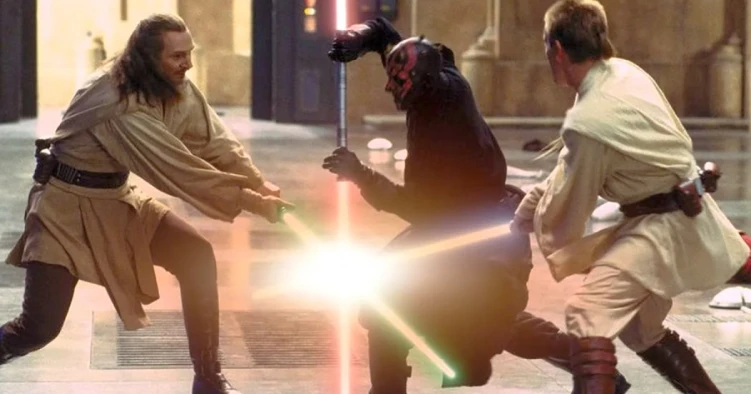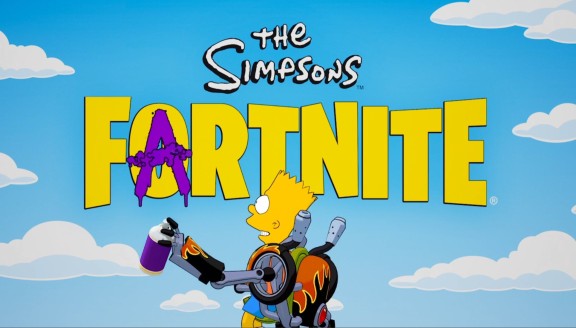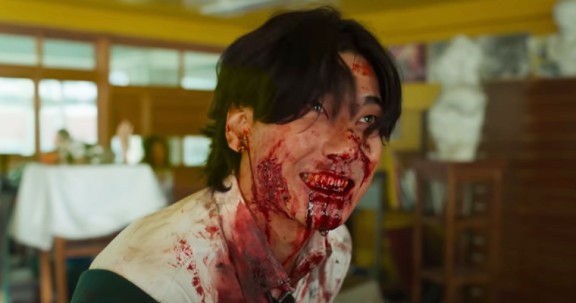
In the climactic moments of Star Wars: The Phantom Menace, Jedi Master Qui-Gon Jinn and his apprentice Obi-Wan Kenobi engage in a breathtaking lightsaber duel against the menacing Sith Lord Darth Maul. Set to John Williams’ rousing Duel of the Fates, this iconic battle showcased the agility and skill of the Jedi and Sith in their prime, captivating audiences with its intricate choreography and high stakes. Now, 26 years after the film’s release, Ewan McGregor, who portrayed Obi-Wan Kenobi, has confirmed a long-held suspicion about the technical filmmaking behind this legendary sequence during an appearance at Fan Expo Boston, as reported by Collider.
McGregor revealed that the duel’s rapid pace, performed with precision by himself and Darth Maul actor Ray Park, prompted director George Lucas to employ a filmmaking technique to ensure its believability. “When me and Ray did that fight … George — I’ve got to get this right — over-cranked,” McGregor explained. “We used to shoot on film, and you can adjust the speed that the film’s going through the camera. If you want it to be slow motion, you make the camera run really fast so when you play it back, it’s in slow motion. I remember hearing him saying, ‘They’re going too fast. Slightly over-crank the camera.’ So they over-cranked the camera to make it slightly slower because me and Ray were so fast doing this fight. He was worried that people wouldn’t believe it.”
This revelation underscores the extraordinary effort behind the Star Wars: The Phantom Menace lightsaber duel, widely regarded as one of the most memorable in the Star Wars franchise. The sequence, featuring Qui-Gon Jinn (Liam Neeson), Obi-Wan Kenobi, and Darth Maul, was a groundbreaking departure from the slower, more deliberate combat of the original trilogy, such as the duel between Obi-Wan Kenobi and Darth Vader in Star Wars: A New Hope. The choreography, meticulously crafted and rehearsed, showcased the warriors’ superhuman speed and precision, with McGregor and Park executing complex moves at a blistering pace. Accompanied by John Williams’ operatic score, “Duel of the Fates” became an instant classic, cementing the duel’s place as a highlight of the prequel trilogy and a defining moment in Star Wars history.
McGregor’s insight highlights the dedication of the actors to their craft. The intense training required to memorize and perform the intricate choreography speaks to the commitment of McGregor and Park, whose performances pushed the boundaries of what lightsaber combat could be. Interestingly, Lucas, known for his mantra of “faster and more intense,” opted to slow the sequence slightly to ensure audiences could fully appreciate the skill on display without questioning its plausibility. This technical adjustment, achieved through over-cranking the film camera, allowed the duel to retain its dynamic energy while maintaining a sense of realism.
Despite its acclaim, not all involved were entirely satisfied with the duel’s outcome. Liam Neeson, who played Qui-Gon Jinn, recently expressed in a GQ interview that his character’s defeat by Darth Maul made Qui-Gon seem “hardly a master Jedi.” Nevertheless, Neeson noted he had a “great” experience working on the film, reflecting the overall positive sentiment among the cast despite the physical and technical challenges.
The legacy of the Star Wars: The Phantom Menace lightsaber duel endures as a testament to the prequel trilogy’s ambition to elevate Star Wars action to new heights. Fans can revisit this iconic moment, along with the rest of the film, as Star Wars: The Phantom Menace is now streaming on Disney+.






